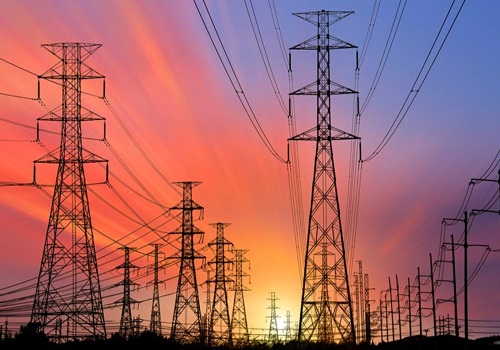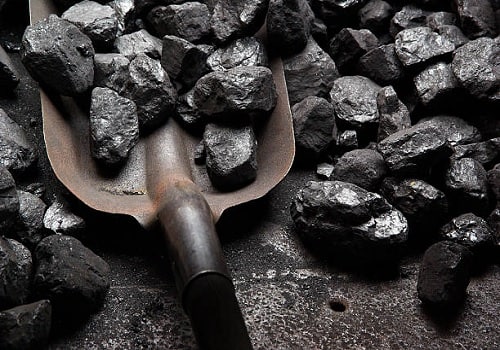Global investors move to renewable as coal demand dips in India

Follow us Now on Telegram ! Get daily 10 - 12 important updates on Business, Finance and Investment. Join our Telegram Channel
Two reports on Tuesday looked into coal demand in India's electricity mix and global financial flows moving to renewable energy industry.
A week earlier, International Energy Agency's (IEA) India energy outlook said India would need a massive investment of $1.4 trillion if it were to aim for net zero by mid 2060.
Much of this could come in from estimated savings due to reduced oil import bills. However, in addition to this, India could very well attract international investors.
The two new reports, one by IEEFA highlights various pull factors that make India's renewable energy sector attractive for foreign direct investments and another by energy think tank Ember reveals India's coal power has continued to decline since reaching a peak in 2018.
The Institute for Energy Economics and Financial Analysis (IEEFA) has looked at the number of new foreign direct investments coming into India's renewable energy sector and highlights that close to $500 billion worth of investments would be needed if India were to reach 450 gigawatts (GW) of renewable energy by 2030.
Ember's analysis says coal share in the electricity mix has been declining and if India sticks to its electricity policies as laid out in its five-year National Electricity Plan (2018) then coal will see a continued decline as more renewable energy capacity is added.
"Domestic and global institutions across the financial, corporate, energy, utility and government sectors are primed to deploy a wall of capital that India needs to fund its ambitious renewable energy targets," says report co-author Tim Buckley, Director Energy Finance Studies, South Asia, at IEEFA.
While the renewable energy sector in India has received more than $42 billion in investment since 2014, the report highlights that it will require a further $500 billion in order to reach 450 gigawatts (GW) of capacity by 2030.
This includes the capital cost of adding more than 300GW of new renewables infrastructure, firming low-cost but intermittent renewable power generation, and expanding and modernising grid transmission and distribution.
Analysis by Ember says India's coal-fired electricity generation fell five per cent in 2020 due to significantly reduced annual electricity demand as a result of the Covid-19 lockdown.
It is the second consecutive year that coal power has fallen, with coal generation down eight per cent in 2020 compared to 2018. However, coal still remains the dominant source of electricity, generating 71 per cent of India's electricity in 2020.
The study analyses new data from the Central Electricity Authority, showing that coal fell by 51 TWh (five per cent) in 2020, caused by a 36 TWh (three per cent) fall in electricity demand and a 12 TWh (three per cent) rise in solar generation.
As coal-fired generation fell and coal capacity continued to rise, India's coal plant load factor fell to a record low level of 53 per cent in 2020.
Ember's report demonstrates that India's coal-fired generation will continue to plateau this decade if electricity demand is structurally impacted by Covid-19.
With electricity demand projected to grow just four-five per cent every year until 2030, the study calculates that there would only be a small (52 TWh) increase in coal-fired generation by 2030.
The analysis draws on data from the IEA, demonstrating that the India Energy Outlook 2021 report supports the conclusion that coal power will plateau and could even fall this decade.
"India has a once-in-a-generation opportunity to transform its energy system, and the benefits of doing so are huge," Buckley told IANS.
"India could dramatically improve its energy security by reducing reliance on expensive fossil fuel imports. The ongoing solar energy deflation -- now around Rs 2/kWh, below the marginal fuel cost of coal-fired power plants -- gives India the economic incentive to accelerate its energy transition and be a world leader in helping to solve the climate crisis, plus address chronic air pollution and water stress.
"Our report focuses on the enormous amount of capacity building that has been undertaken in 2020 such that global capital is ready, willing and able to be deployed at unprecedented scale in building domestic, zero-emissions, low-cost renewable infrastructure in India.
"We estimate that striving for 450 gigawatts of renewable energy by 2030 would require deploying $500 billion of investment over the coming decade -- $300 billion for wind and solar infrastructure, $50 billion on grid firming investments such as gas-peakers, hydro and batteries, and $150 billion on expanding and modernising transmission and distribution."
IEEFA's report, co-written by research analyst Saurabh Trivedi, identifies the capital flowing into the renewables sector for new projects and infrastructure investment trust structures, as well as the capital recycling opportunities for the National Investment and Infrastructure Fund for operational projects.
Trivedi says as well as attracting capital into new projects, India needs to recycle existing investments in renewable energy projects.
This new trajectory puts India on a more climate-friendly pathway.
Ember's report reveals that this is dependent on India delivering its 2022 target for wind and solar generation, which would require more than double the generation seen in 2020 (118TWh).
Aditya Lolla, Ember's senior analyst, said: "It seems increasingly likely that coal power will plateau in the 2020s in India. But, there is still a risk that India could be knocked off course. As India recovers from the Covid-19 pandemic shock, the choices it makes in the next decade will make or break its coal-to-clean electricity transition. Now the focus must be on building enough new solar and wind capacity to meet increasing electricity demand.
"That would mean the new wave of coal plants coming online in the next few years can be used to replace India's oldest and dirtiest coal plants. As the world's second-largest coal generator, all eyes are on India in this crucial decade of climate action."












 320-x-100_uti_gold.jpg" alt="Advertisement">
320-x-100_uti_gold.jpg" alt="Advertisement">












